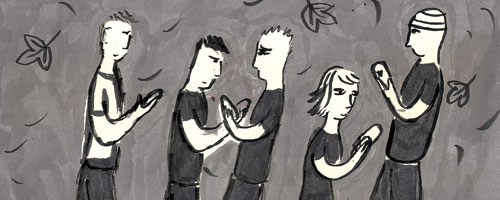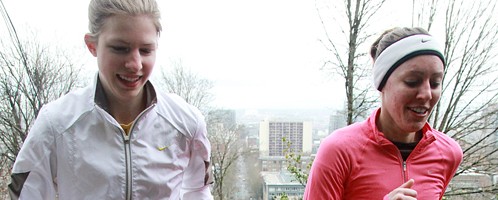On the whole, science education in the United States is sorely lacking. Between state mandates about what can and cannot be taught, disinterested teachers and a gender divide that has not been rectified despite more than 40 years of work getting women into the sciences, some would go so far as to say that science education has stagnated.
Partnering up for the good of all
On the whole, science education in the United States is sorely lacking. Between state mandates about what can and cannot be taught, disinterested teachers and a gender divide that has not been rectified despite more than 40 years of work getting women into the sciences, some would go so far as to say that science education has stagnated.
To a degree, they’re right.
However, thanks to a grant from the M. J. Murdock Charitable Trust, Portland State is working to fix this. The Partners in Science Program has awarded two grants to PSU to bring high school science teachers into its research labs so that they have something fresh and new to share with their students. The faculty awarded these grants include Carl Wamser (chemistry), Eric Bodegom (physics) and Ralf Widenhorn (physics).
It’s a good plan, to be sure, and there’s very little I can complain about—when it comes to issues surrounding science education, that’s rare.
The M. J. Murdock Charitable Trust is well known for its programs supporting education. For the most part, it’s all related to university research and teaching programs. The trust supports scientific research specifically in the Pacific Northwest, with programs in Alaska, Idaho, Montana, Oregon and Washington. The grants are largely awarded to doctorate and doctorate-track students, with a focus on hard sciences such as chemistry, physics and biology.
The idea behind the Partners in Science Program is fairly simple. Science education is lackluster in America, to say the least. Giving high school teachers opportunities to work on cutting-edge research should help them see the benefits in inquiry-based approaches to science. Their work on the research also gives them experiences to share with their students.
Perhaps more importantly, the participation in research helps teachers to find their footing as a member of the scientific community. A teacher who is able to say, “Yes, I am a scientist. I’ve worked in a lab and done research,” is likely to feel more confidence in his or her abilities and place as a teacher.
The university stands to benefit from this as well, as only teachers qualified to take part in related research will be brought in by the grants. In PSU’s case, this means teachers with a background in physics and/or chemistry. Appropriate, given the importance of teaching these sciences early.
Furthermore, this is exactly the sort of exposure the research labs at PSU need. More attention can mean more investigation—and more investment. It also connects high school students to PSU; they can associate their school or favorite teacher with the university.
There is, of course, the question of why this grant doesn’t pay for interested high school students to at least observe at one of PSU’s labs. It seems like it would be beneficial for students already interested in science to have that interest nurtured. This is particularly true for students in especially underfunded districts.
However, the interest in working at a research lab might not really pique unless someone a student trusts as an authority figure introduces them to the idea. In that light, it makes sense to support teachers working in the labs.
The only real issue I take with this program is the choice of labs. While the labs the grant supports are among the most supported and well-known of the research labs at PSU, the principle investigators of these labs are all male. This might reinforce the idea that to be successful as a scientist, you must be male.
PSU and/or the program could have supported one of the female-led research labs. For example, they could have supported the Estes lab, run by PSU professor of biology Suzanne Estes. Or maybe the Goforth laboratory, with PI Andrea Goforth, an assistant professor of chemistry.
Both of these labs are investigating important concepts in science at large (gene mutation/evolution and the advancement of bionanotechnology, respectively) and could be used to inspire young girls to achieve greatness in science.
But let’s stop splitting hairs. This is a good plan, and it’s only at its inception. The grants are good for the university, both research-wise and exposure-wise, and for high school students in the Pacific Northwest, whose teachers may help stoke an interest in science in them.
Plus, the benefit to the teachers themselves could be significant; it may lead to the establishment of extracurricular activities or a renewed interest in keeping up to date on research, leading to an improved sense of what students might need to know if they intend to go forward in the sciences.
This could be a good start for PSU and the Partners in Science Program. With any luck, we’ll see expansion in the next few years.




